Weeping Moss (Vesicularia ferriei)
If you’re into setting up aquariums, you’ve probably heard of Weeping Moss (Vesicularia ferriei).
It’s more than just a decoration for your tank. This moss has a unique look with its hanging branches.
A lot of people like it, not just for how it looks, but because it has some benefits for the water quality in your aquarium. In fact, Weeping Moss can help keep the water clean, which is good news for your fish.
- Related: 12 Best Carpeting Plans
- Related: Best Stem Plants
- Related: Top 16 Background Plants
- Related: Top 10 Aquarium Foreground Plants
It’s not just for beginners either; even experienced aquarium keepers find value in adding this moss to their setups. So, if you’re looking to add a new plant to your tank, Weeping Moss is a solid choice.
Keep reading to find out more about this interesting moss.
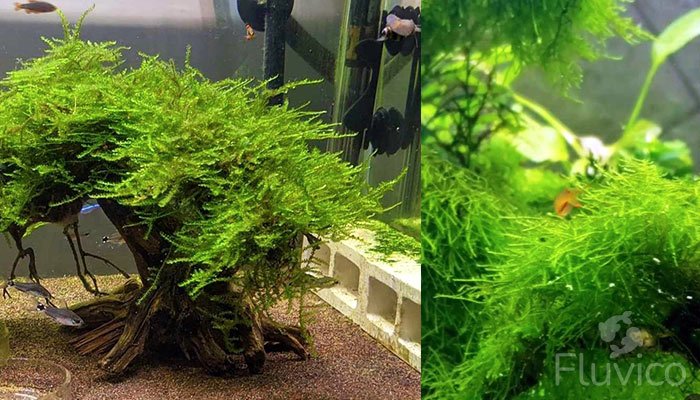
Facts & Overview – Weeping Moss
Weeping Moss (Tropica), a native of China, is quite the celebrity in the aquarium hobby. With its attractive, cascading growth habit, it easily stands out in any aquatic setting.
Weeping Moss reaches up to 3-4 inches (or 7-10 cm) in height, but its appeal lies in its horizontal expansion, where it displays its beautiful, downward ‘weeping’ effect. It grows at a moderate pace and is happiest under low to medium light conditions.
Adaptable and hardy, Weeping Moss thrives in a wide range of water parameters but prefers a slightly acidic to neutral pH, around 6.0 – 7.5, and temperatures between 20 to 28°C.
One of the unique features of Weeping Moss is its versatility. It looks fantastic in the foreground, midground, or background, creating a mesmerizing green curtain when appropriately placed. Propagation is quite straightforward, primarily through division, making it an excellent choice for hobbyists who want to add an extra layer of lush greenery to their aquascapes.
When you bring home Weeping Moss, you’re investing in a unique, hardy, and enchanting plant that will significantly contribute to the beauty of your aquarium.
| Fact | Details |
|---|---|
| Scientific Name | Vesicularia ferriei |
| Common Name | Weeping Moss |
| Native Region | China |
| Max Size (Approx) | 4 inches (10cm) |
| Light Requirements | Low to Medium |
| Ideal Water Parameters | pH 6.0 – 7.5, Temperature 20-28°C |
| Growth Rate | Slow to Medium |
| Tank Placement | Midground or Background |
| Propagation | Division or Fragmentation |
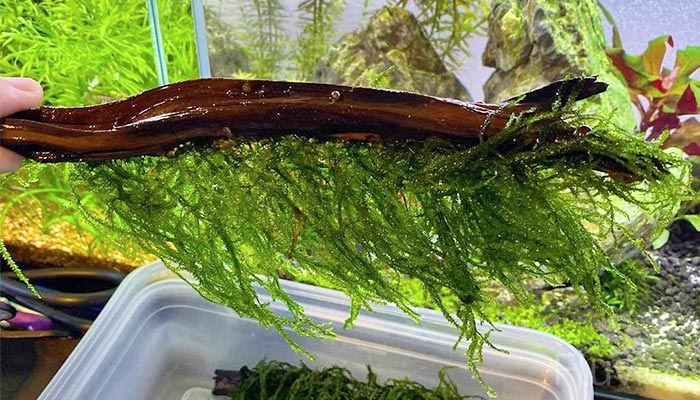
Care & Growing Guide
Caring for Weeping Moss isn’t overly complicated, but knowing a few key details can go a long way in ensuring its successful growth.
Tank Requirements
Weeping Moss is quite forgiving and adapts well to various tank setups. For optimal growth, try to mimic its natural habitat. Moderate water flow, a stable environment, and plenty of surfaces for the moss to attach to (like rocks or driftwood) are all beneficial.
Tank Size
Thanks to its compact growth, Weeping Moss can fit into tanks of virtually any size. Even in a small 5-gallon tank, it can be an eye-catching feature.
Water Parameters
This moss prefers slightly acidic to neutral water conditions with a pH range of 6.0 to 7.5. The temperature should be kept between 20 to 28°C. However, Weeping Moss can tolerate a wider range if changes are gradual.
Nutrition
Weeping Moss absorbs nutrients directly from the water. If you keep a low-stock tank or your water is relatively clean, consider using a high-quality liquid fertilizer to ensure it gets necessary nutrients.
CO2
Weeping Moss doesn’t necessarily require additional CO2. However, if you’re aiming for more vigorous growth, CO2 supplementation can indeed help.
Lighting
Weeping Moss thrives in low to medium light conditions. Avoid intense light, which can lead to algae growth and might damage the plant.
Substrate
Substrate choice isn’t a big concern for Weeping Moss since it doesn’t have roots and primarily attaches to hardscape. You can pick any substrate you like for the rest of your tank.
Trimming & Pruning
Regular trimming will keep your Weeping Moss looking tidy. Don’t shy away from cutting it back; this moss handles trimming well and will regrow more robustly.
Tips to Make Your Weeping Moss Grow Faster
- Keep water parameters within the ideal range.
- Supply a balanced liquid fertilizer if necessary.
- Consider CO2 supplementation for quicker growth.
- Regularly trim the moss to stimulate denser growth.

Compatible Tank Mates
Weeping Moss is an excellent neighbor in the tank. It’s non-invasive and compatible with most peaceful fish and invertebrates. Small, peaceful species like Tetras, Guppies, and Bettas make great companions, as do most types of shrimps and snails. Avoid species known to nibble on plants.
How to Plant, Aquascape & Propagate Weeping Moss
Weeping Moss has a stunning effect when used in aquascaping and planting it is a pretty straightforward task.
How To: Attach Weeping Moss To Driftwood or Hardscape
You can simply attach Weeping Moss to any hardscape item such as driftwood or rocks. Use fishing line, cotton thread, or even super glue to secure it in place. Over time, the moss will anchor itself to the surface as it grows.
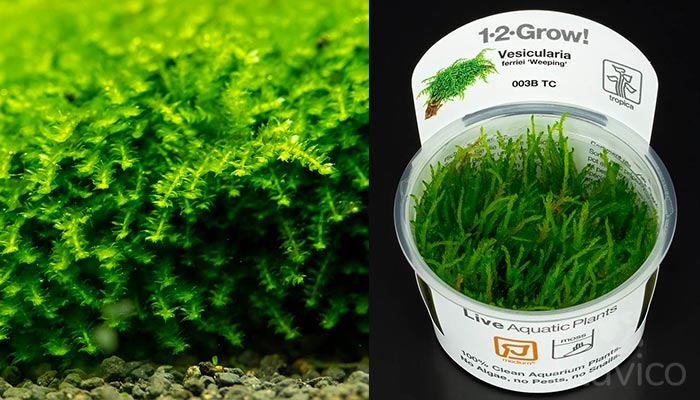
How to Propagate Weeping Moss
Propagating Weeping Moss is as easy as it gets. Just cut off a piece and attach it to a new spot. The trimmed piece will continue to grow, developing into a new Weeping Moss plant over time.
Tips for Planting Weeping Moss for effective carpet coverage
If you’re aiming for a carpet-like effect, simply attach several small pieces of Weeping Moss to a mesh grid. Over time, the moss will grow to cover the mesh, creating a lush, green ‘carpet’ on your aquarium floor.
Common Issues (FAQs & Solutions)
Even though Weeping Moss is generally easy to care for, there can be challenges. Here are some common issues:
Turning Yellow
Yellowing moss could be a sign of nutrient deficiency. Try adding a complete aquatic plant fertilizer to your tank to rectify this issue.
Turning Brown
If your Weeping Moss turns brown, it may not be getting enough light, or the water conditions may be out of its preferred range. Make sure you’ve got the right lighting and stable water parameters.
Black Spots
Black spots could be a sign of fungal or bacterial infections. It’s best to remove the affected areas and treat the aquarium with an appropriate remedy.
Should You Add Weeping Moss to Your Aquarium?
Weeping Moss can add a magical touch to any aquarium, creating an enchanting underwater world with its unique, weeping growth pattern. If you’re looking to add a vibrant, low-maintenance, and eye-catching plant to your aquarium,
Weeping Moss could be a perfect choice. As long as you’re ready to provide its basic care requirements, Weeping Moss will continue to beautify your tank for years to come.
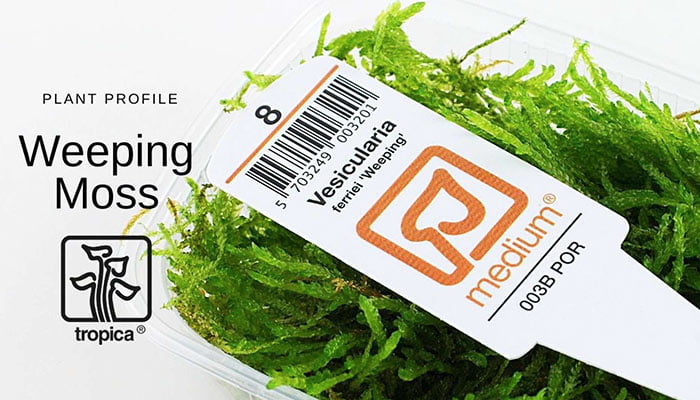
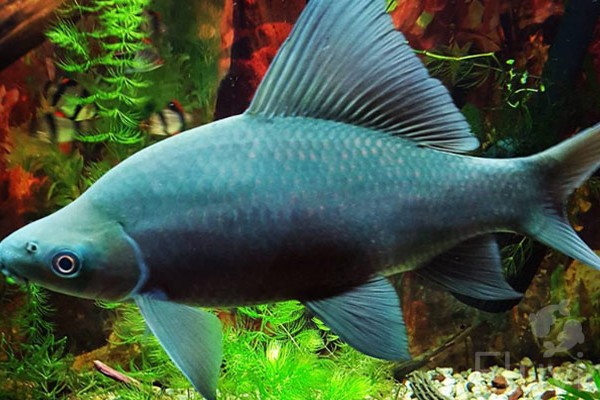
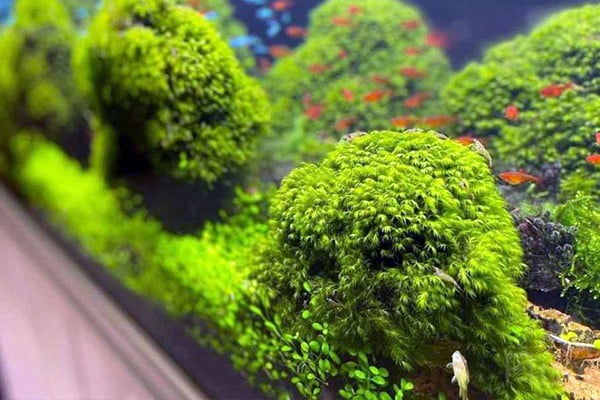



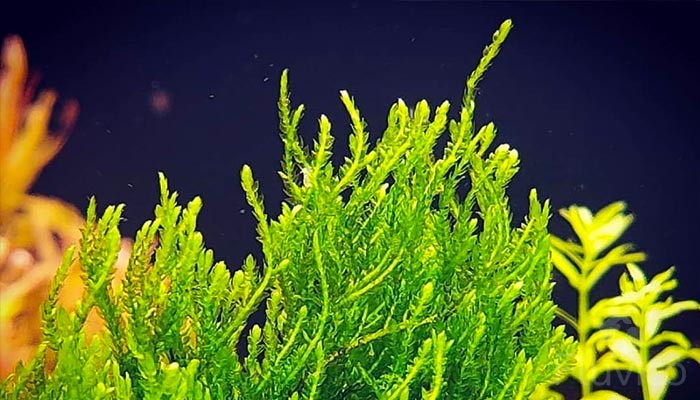
Thanks for reading my Weeping Moss Guide! If you have any questions, we’re here to help!